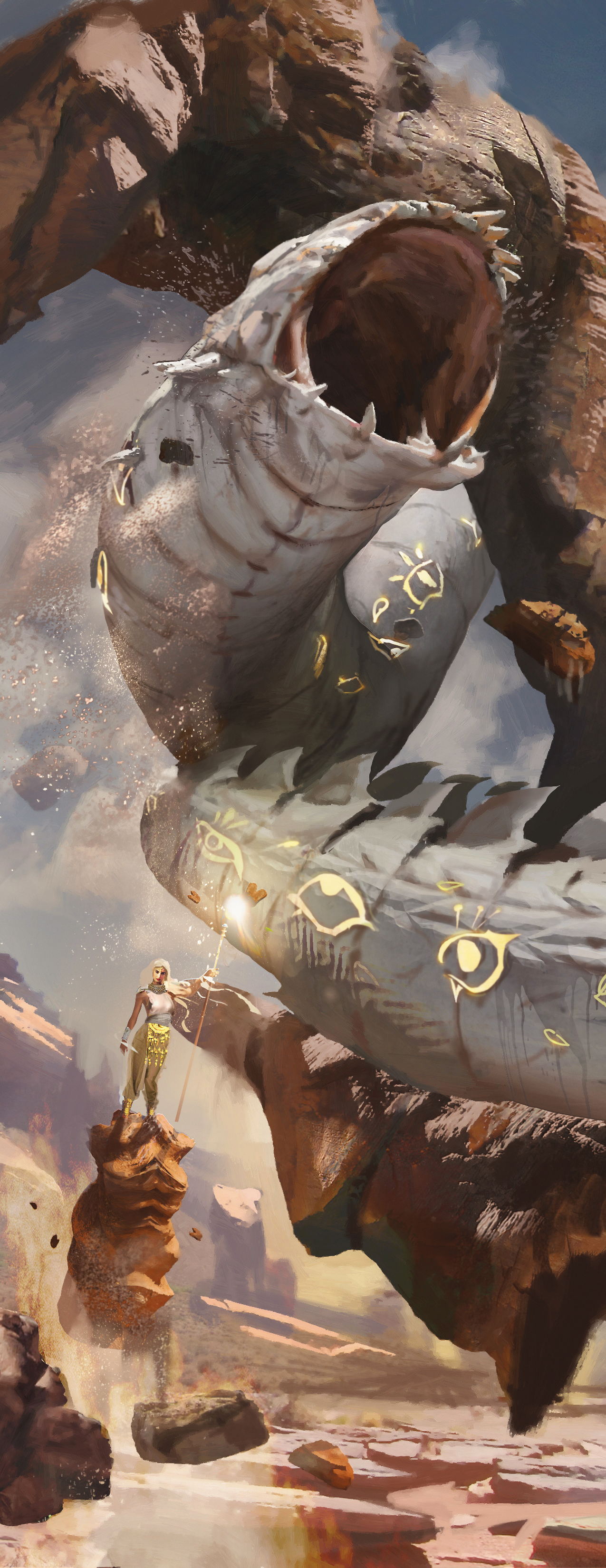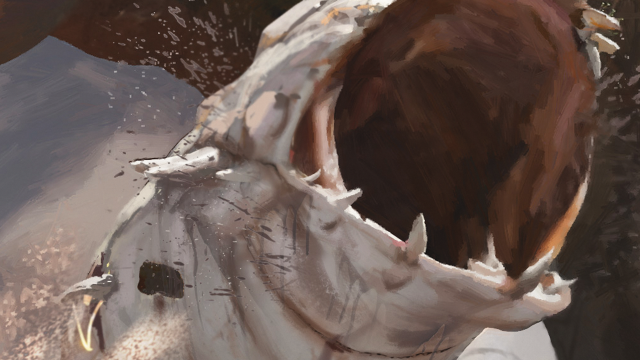It’s almost time to descend onto the dread demi-plane of Ravenloft and its many realms when Dungeons & Dragons releases its latest sourcebook, Van Richten’s Guide to Ravenloft. There’s so much more to the horrors of Ravenloft than what our dear friend Strahd is up to though. Gizmodo has a sneak peek inside just one of those new spooky lands and spoke to senior D&D game designer Wes Schneider to find out more.
The new sourcebook lets players venture beyond Strahd Von Zarovich’s lands in the iconic realm of Barovia — already well-mined in Fifth Edition’s Curse of Strahd — and into over 30 other domains of dread in the plane of Ravenloft. Each offers gamers a different twist on horror themes and genres, from the masquerade of Dementlieu to Viktra Mordheim’s ice golem horrors in Lamordia — but if you’re looking for something a little more spellbinding, Gizmodo is excited to give you a first look at Hazlan, a land of disaster and unflinching wizardry might. Check out Guide to Ravenloft’s set up for Hazlan below, as well as some incredible, giant-sized art for the realm by Robin Olausson!
Hazlan
Domain Doomed by Magic
Darklord: Hazlik
Genres: Dark fantasy and disaster horror
Hallmarks: Amoral spellcasters, magic-ravaged environment, magical experiements, wild magic
Mist Talismans: Eye of Hazlik amulet, gremishka foot, scrap from a red robe
In Hazlan, magic is authority, justification for any excess, and — for those without it — the specter of inevitable doom. This domain is less a nation than a vast magical laboratory, whose wizard overlord Hazlik views every being as either an apprentice or a test subject. He conscripts those he acknowledges as lesser wizards into performing elaborate magical experiments, twisting the fabric of magic and reality until it frays. These experiments endlessly scar a domain drained of vitality, tortured by magical disasters, and overrun with abominations. The greatest wounds affect the invisible flows of magic underpinning the land, turning it erratic and dangerous.

Wizards, sorcerers, and spellcasters of all sorts beware, if your party ventures forth into Hazlan! To learn more about the inspirations behind Hazlik’s dread domain and Guide to Ravenloft’s approach to horror roleplay, Gizmodo asked senior D&D game designer Wes Schneider a few questions over email. Check out the full interview below!
James Whitbrook, Gizmodo: What can you tell us about the ideation process for Hazlan?
Wes Schneider: Hazlan’s a great example of a Ravenloft domain where the “technology” behind its horror concept has improved since its origin. At its root, Hazlan is a creepy magocracy ruled by Hazlik, a petty wizard overlord. But since the ‘90s, our collective imaginations have expanded on what an evil magic dystopia might look like. If nothing else, the number of dystopian future and post-apocalyptic horror films have exploded since then. D&D also has the wonderful plot trope of “a wizard did it.” Who made this dungeon? Why are fiends invading? Where did owlbears come from? A wizard did it. At its heart, Hazlan is a merging of these concepts. Hosts of unrivalled, amoral wizard-tyrants did it. Did what? Everything.
Hazlan is a domain where anything wizards could do they’ve done to the extreme, and they’re still doing it, all in the name of magical discovery and with the effects scarring the realm’s people and land. This makes it the domain for all manner of weird monsters, amoral experiments, magical contagions, unnatural weather, collapsing reality, meteor showers, mutations, disasters, and so much more. Writer Jessica Ross worked with the team on this domain and brought some delightfully depraved ideas about evil wizardly schemes and domain-wide disasters to the table. This variety all came together with Jared Blando’s fantastically bizarre map to make Hazlan one of the most vibrant and varied of the Domains of Dread.
Gizmodo: There’s dozens and dozens of dread realms in Ravenloft. What was the pitching process like to sort out the details beyond the realms already previously covered in past D&D sources?
Schneider: Fear changes over time. The horror front of mind in the ‘80s and ‘90s is not the same fair we’re seeing in frightening films and fiction today. Rather than focusing on the same terror of decades past, we wanted to make room for a broader sweep of horror. The Domains of Dread have endless room, especially for all that’s come before, but we also wanted to explore what D&D horror looks like when it pits characters against endless zombie hordes, environmental disasters, folk horror threats, and other terrors popularised in recent years. In some cases, existing domains made natural settings for these concepts, but other concepts begged for their own entirely new domains.
Gizmodo: When you’re coming up with the short-and-sharp setup for realms like this, what other tools will Ravenloft give to players and dungeon masters to flesh out settings that get this bite-sized treatment?
Schneider: Van Richten’s Guide to Ravenloft has a whole chapter on creating your own domains and Darklords. With some of the shorter domains in the book, we send readers off on a certain path, but where it leads is theirs to discover. With the varied discussions on creating horror adventures themed around specific genres and hundreds of related ideas for story elements, DMs will find a wealth of details to help them flesh out existing domains or their own creations.
Gizmodo: You’ve previously spoken about Ravenloft including tools for players to moderate and run consensually agreed upon material at the table. Can you tell us a little more about how those rules align with Ravenloft’s horror storytelling, and WOTC’s approach to expanding on “session zero” guides like this in future material?
Schneider: In large part, it’s as simple as not making someone sit through a movie they don’t want to see. If there’s a type of horror film I don’t like, I won’t go see it. Or, if I missed the trailer and a film takes a turn I’m not interested in, I can walk out. I’m entirely in control of most of my horror media experiences. (Power buttons are a heck of a power trip.) Things get a little trickier when your horror experience is a group of collaborating players, when there is no trailer, and when the story has the potential to unfold in any possible way. So players don’t feel stranded in unexpected or uncomfortable situations, we provide a framework for groups to discuss horror and be upfront about what they do and don’t want to see in a game. Moreover, we talk about how to adjust those expectations once a campaign’s gotten started — even midgame if needs be. In the best scenarios, groups won’t need these options, but if an adventure does take an unexpected turn, we want to make sure players can quickly adjust and get right back to the game.
Van Richten’s Guide to Ravenloft is in stores tomorrow, May 18.
